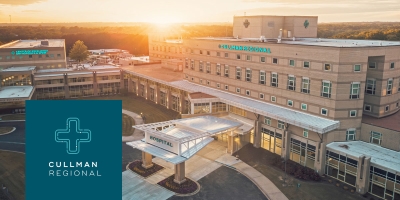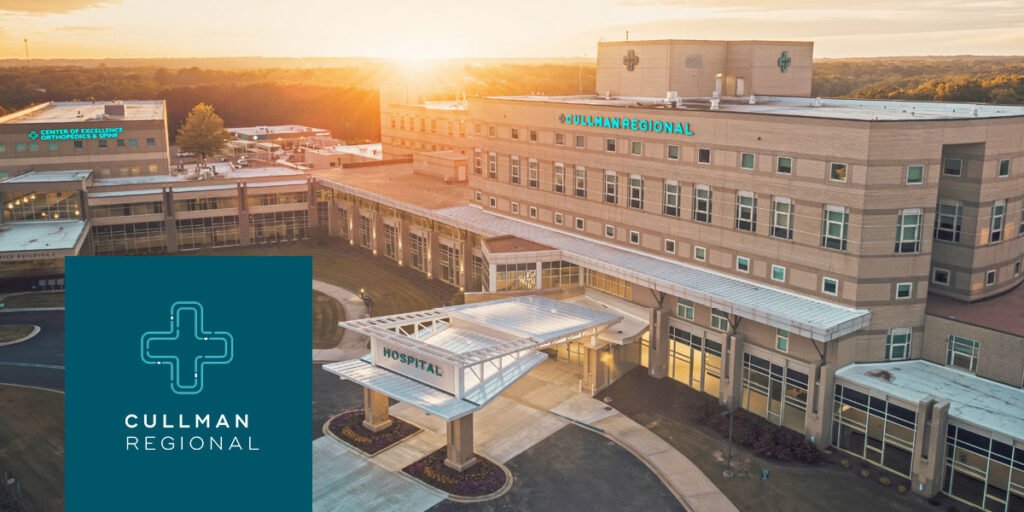
Located south of Huntsville and about 55 miles from Birmingham, Kalman is a community with around 45,000 residents. For a city of this size, accessible quality healthcare is essential for its residents.
This is where Cullman Regional Medical Center comes into play. As a community-led, independent hospital, Cullman Regional not only provides top-notch healthcare services but also contributes to the local economy, demonstrating a strong commitment to its community.
A Legacy of Independence and Growth
Established in 1939, Cullman Regional operates as a non-profit hospital owned by medical institutions in Calman County. Unlike hospitals in larger metropolitan areas that are often part of broader healthcare systems, Cullman Regional maintains complete autonomy.
Two decades ago, Cullman Regional was associated with Alabama’s Baptist Health System. However, recognizing the advantages of independence, local health authorities acquired the remaining shares held by the Baptists. In the last 15 years alone, the hospital has invested over $185 million in capital projects, including major expansions in 2018 and 2023, which increased its capacity to 175 acute care beds. These investments enhance the services and clinical capabilities at Cullman Regional, ensuring that high-quality healthcare remains locally available.
Nowadays, the hospital supports residents in Kalman County as well as six neighboring counties: Blunt, Marshall, Morgan, Lawrence, Winston, and Walker.
The Importance of an Independent Hospital
Having a strong independent hospital in a community offers numerous advantages. The positive impacts—ranging from local access to quality healthcare to significant economic contributions—are quite remarkable.
Localized Decisions – Independent hospitals can prioritize the community’s needs rather than adhering to corporate policies from far-away executives. This autonomy in operations means that financial resources remain within the community, rather than being redistributed among hospitals in other regions.
Patient-Centered Care – With decision-making capabilities at a local level, independent hospitals can tailor their care to meet community needs. A stark example of this is in Alabama, where the recent closures of maternity and alumni care facilities highlight the importance of localized services.
Financial Control – Independent hospitals manage their own financial resources and can reinvest local revenues into improved facilities, advanced technology, and skilled clinical staff—all without external constraints.
Economic Impact – Community hospitals don’t just provide healthcare; they also serve as significant employers, creating stable, well-paying jobs while supporting local businesses. When independent hospitals thrive, they become vital assets for the local economy.
Strong Community Bonds – Successful community partnerships stem from relationships built with local businesses, schools, and non-profits. Independent hospitals can enhance health services and actively engage with the community to address its priorities.
Doctor Autonomy – Medical staff significantly influence policies and patient care decisions, fostering a responsive healthcare environment.
Quick Response to Changes – The healthcare industry can be quite demanding, so quick adaptability to new developments is crucial. Independent hospitals, being locally governed, can respond without bureaucratic delays.
Economic and Community Impact
As the largest employer in the county, Cullman Regional isn’t just a healthcare provider; it’s a cornerstone of Kalman’s economy, contributing $375 million annually. Its growth over the past decade has doubled both income and workforce. Currently, the hospital employs approximately 1,600 people, including 450 nurses and 120 medical doctors.
On average, Cullman Regional provides $53 million in healthcare services to uninsured and underinsured patients each year. This includes contributions exceeding $1.2 million annually to the Samaritan Clinic, which supports uninsured residents with various medical needs. This philanthropy, among other community initiatives, showcases the hospital’s commitment to its community.
Advancing Patient Care through Innovation
Cullman Regional is continually enhancing its services to offer innovative and effective care. A notable recent achievement is the opening of the Neonatal Intensive Care Unit (NICU). With the addition of a fourth OB-Gyn doctor, six neonatologists, and four neonatal nurse practitioners, the hospital has significantly improved its capacity to care for women and children, particularly for preterm births and severely ill newborns. High-level neonatal services are now available around the clock, every day of the year.
The hospital’s reach has also expanded to Morgan County through the establishment of an independent emergency department in Hartselle. This facility includes ten treatment rooms, trauma rooms, helipads, and a fully equipped imaging center featuring CT, X-ray, and ultrasound technology.
Looking Toward the Future
Under CEO James Clements’ leadership, Cullman Regional is focused on enhancing quality, increasing revenue, and reducing costs to ensure financial stability and growth. His expertise in healthcare management has earned him a position on Governor Kay Ivey’s Statewide Health Coordination Council (SHCC), further highlighting his influence on Alabama’s healthcare landscape.
Cullman Regional continues to make significant investments in its future.
- Facility Growth – Recent expansions include the NICU and the independent emergency departments at Hartselle Health Park.
- More Experts – The hospital has recruited two new urologists, Dr. Louis Remins and Dr. Lea Abel, in response to rising patient demand.
- Technological Advances – By integrating new electronic health record systems, advanced diagnostic imaging, and robotic surgical techniques, Cullman Regional maintains its competitive edge.
- Financial Sustainability – The hospital is following a strategy initiated a decade ago that has led to growth and success. Core pillars of this strategy, focusing on business efficiency and quality care, support long-term stability in the Kalman region.
A Hospital that Cares and Thrives
Cullman Regional demonstrates that independent hospitals can excel while delivering quality care. By adhering to its community-first mission, the hospital is crafting a legacy of excellence, adaptability, and service.
What a fantastic example of how a smaller hospital can lead the way, showing what a thriving independent hospital can accomplish. Cullman Regional stands out in Alabama’s healthcare industry, offering valuable local health services, fostering economic growth, and engaging with the community.







